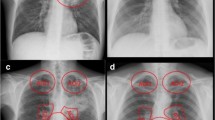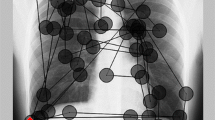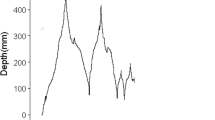Abstract
This experiment investigated whether there might be an effect on the visual search strategy of radiologists during image interpretation of the same adult chest radiographs when given different clinical information. Each of 17 experienced radiologists was asked to interpret a set of 57 (10 abnormal) posteroanterior chest images to identify the presence of pulmonary lesions using differing clinical information (leading to unknown, low and high expectations of prevalence). Eye position metrics (search time, dwell time and time to first fixation) were compared for normal and abnormal images, as well as between conditions. For all images, there was a significantly longer search time at high prevalence expectation compared to low prevalence expectation (W = 75.19, P = <0.0001). Mann–Whitney analysis of the abnormal images demonstrated that the dwell time on correctly identified lesions was significantly shorter at low prevalence expectation compared to both unknown (U = 364.5, P = 0.02) and high prevalence expectation (U = 397.0, P = 0.0002). Visual search patterns of radiologists appear to be affected by changing a priori information where such information fosters an expectation of abnormality.

Similar content being viewed by others
References
Shah PK, Austin JH, White CS, Patel P, Haramati LB, Pearson GDN, Shiau MC, Berkmen YM: Missed non–small cell lung cancer: radiographic findings of potentially resectable lesions evident only in retrospect. Radiology 226:235–241, 2003
Tuddenham WJ, Calvert WP: Visual search patterns in roentgen diagnosis. Radiology 76(2):255–6, 1961
Carmody DP, Kundel HL, Toto LC: Comparison scans while reading chest images taught, but not practiced. Investig Radiol 19(5):462, 1984
Cruz MF, Edwards J, Dinh MM, Barnes EH: The effect of clinical history on accuracy of electrocardiograph interpretation among doctors working in emergency departments. Med J Aust 197(3):161–165, 2012
Doubilet P, Herman PG: Interpretation of radiographs: effect of clinical history. Am J Roentgenol 137:1055–1058, 1981
Song KS, Song HH, Park SH, et al: Impact of clinical history on film interpretation. Yonsei Med J 33:168–172, 1992
Houssami N, Irwig L, Simpson JM, McKessar M, Blome S, Noakes J: The influence of clinical information on the accuracy of diagnostic mammography. Breast Cancer Res Treat 85:223–228, 2004
Berbaum KS, Franken EA, Jr Anderson KL, Dorfman DD, Erkonen WE, Farrar GP, Geraghty JJ, Gleason TJ, MacNaughton ME, Phillips ME, Renfrew DL, Walker CW, Whitten CG, Young DC: The influence of clinical history on visual search with single and multiple abnormalities. Investig Radiol 28:191–201, 1993
Swenson RG, Hessel SJ: The value of searching films without specific preconceptions. Investig Radiol 20(1):100–14, 1985
Summerfield C, Egner T: Expectation (and attention) in visual cognition. Trends Cogn Sci 13(9):403–9, 2009
Balslev T, Jarodzka H, Holmqvist K, de Gravee W, Muijtjens AMM, et al: Visual expertise in paediatric neurology. Eur J Paediatr Neurol 16:161–6, 2012
Mallett S, Phillips P, Fanshawe TR, Helbren E, Boone D, Gale A, et al: Tracking eye gaze during interpretation of endoluminal three-dimensional CT colonography: visual perception of experienced and inexperienced readers. Radiology 273(3):783–92, 2014
Vaidyanathan P, Pelz J, Alm C, Pengcheng S, Haake A: Recurrence quantification analysis reveals eye-movement behavior differences between experts and novices. Proceedings of the Symposium on Eye Tracking Research and Applications. New York: ACM, 2014, pp 303–6
Swensson RG, Hessel SJ, Herman PG: Omissions in radiology: faulty search or stringent reporting criteria? Radiology 123(3):563–7, 1977
Berbaum KS, Franken Jr, EA, Dorfman DD, Barloon TJ: Influence of clinical history upon detection of nodules and other lesions. Investig Radiol 23(1):48–55, 1988
Littlefair S, Mello-Thoms C, Reed W, Pietryzk M, Lewis S, McEntee M, Brennan P: Increasing abnormality expectation in thoracic radiology leads to overcall. Acad Radiol 23(3):284–9, 2016
Shiraishi J, Katsuragawa S, Ikezoe J, Matsumoto T, Kobayashi T, Komatsu K, Matsui M, Fujita H, Kodera Y, Kunio D: Development of a digital image database for chest radiographs with and without a lung nodule: Receiver operating characteristic analysis of radiologists’ detection of pulmonary nodules. AJR 174(1):71–74, 2000
Haygood TM, Ryan J, Brennan PC, Li S, Marom EM, McEntee MF, Itani M, Evanoff M, Chakraborty D: On the choice of acceptance radius in free-response observer performance studies. Br J Radiol 86(1021):42313554, 2012
Samei E, Badano A, Chakraborty D, et al. Assessment of display performance for medical imaging systems. American Association of Physicists in Medicine Task Group 18. http://www.aapm.org/pubs/reports/OR_03.pdf. 2005
Seriès P, Seitz AR: Learning what to expect (in visual perception). Front Hum Neurosci 7:668, 2013
Rahnev D, Lau H, de Lange FP: Prior expectation modulates the interaction between sensory and prefrontal regions in the human brain. J Neurosci 31(29):10741–10748, 2011
Reed WM, Ryan JT, McEntee MF, Evanoff MG, Brennan PC: The effect of abnormality prevalence expectation on expert observer performance and visual search. Radiology 258(3):938–43, 2011
Tourassi G, Voisin S, Paquit V, Krupinski E: Investigating the link between radiologists’ gaze, diagnostic decision, and image content. J Am Med Inform Assoc 20(6):1067–75, 2013
Manning DJ, Ethell SC, Donovan T: Detection or decision errors? Missed lung cancer from the posteroanterior chest radiograph. Br J Radiol 77:231–5, 2004
Krupinski EA: Visual scanning patterns of radiologists searching mammograms. Acad Radiol 3:137–44, 1996
Hu CH, Kundel HL, Nodine CF, Krupinski EA, Toto LC: Searching for bone fractures: a comparison with pulmonary nodule search. Acad Radiol 1(1):25–32, 1994
Mello-Thoms C, Nodine CF, Kundel HL: What attracts the eye to the location of missed and reported breast high expected abnormalities? In: Proceedings of the Eye Tracking Research and Applications (ETRA) Symposium 111–117, 2002
Nodine CF, Kundel HL: A Visual Dwell Algorithm Can Aid Search and Recognition of Missed Lung Nodules in Chest Radiographs. In: Brogan D Ed. Visual Search, Taylor and Francis, 1990, pp 399–406
Nodine CF, Kundel HL, Toto LC, Krupinski EA: Recording and analysing eye-position data using a microcomputer workstation. Behav Res Methods Instrum Comput 24(3):475–485, 1992
Wolfe JM: When do I Quit? The Search Termination Problem in Visual Search. In: Dodd MD, Flowers JH Eds. The Influence of Attention, Learning, and Motivation on Visual Search, Nebraska Symposium on Motivation, 2013
Reed WM, Chow SL, Chew LE, Brennan PC: Can abnormality expectations drive radiologists’ behavior? Acad Radiol 21(4):450–6, 2014
Nodine CF, Mello-Thoms C, Kundel HL, Weinstein SP: Time course of perception and decision making during mammographic interpretation. AJR Am J Roentgenol 179(4):917–23, 2002
Wolfe JM: When do I quit? The search termination problem in visual search. Neb Symp Motiv 59:183–208, 2012
Berbaum KS, Franken EA, Dorfman DD, Roolholamini SA, Kathol MH, Barloon TJ, Behlke FM, Sato Y, Lu CH, El-Khoury GY, Flickinger FW, Montgomery WJ: Satisfaction of search in diagnostic radiology. Investig Radiol 25(2):133–140, 1990
Author information
Authors and Affiliations
Corresponding author
Rights and permissions
About this article
Cite this article
Littlefair, S., Brennan, P., Reed, W. et al. Does Expectation of Abnormality Affect the Search Pattern of Radiologists When Looking for Pulmonary Nodules?. J Digit Imaging 30, 55–62 (2017). https://doi.org/10.1007/s10278-016-9908-7
Published:
Issue Date:
DOI: https://doi.org/10.1007/s10278-016-9908-7




